The Mayan civilization has fascinated historians and archaeologists for centuries, and one of the most intriguing aspects of their culture is their hieroglyphic writing system. These intricate and enigmatic symbols have long puzzled experts, but recent breakthroughs have unveiled some of the mysteries surrounding Mayan hieroglyphics. In this article, we will delve into the origins of this unique writing system, explore its structure and decipherment, uncover its purpose, and unravel the secrets hidden within its inscriptions. Prepare to embark on a journey of discovery as we delve into the fascinating world of Mayan hieroglyphics.
Contents
- The Origins of Mayan Hieroglyphics
- The Structure of Mayan Hieroglyphics
- Deciphering Mayan Hieroglyphics
- The Purpose of Mayan Hieroglyphics
- Unraveling Mayan Hieroglyphic Inscriptions
- The Enigmatic Symbols of Mayan Hieroglyphics
- Conclusion
-
Frequently Asked Questions
- What does the term “hieroglyphics” mean?
- How old are Mayan hieroglyphics?
- How were Mayan hieroglyphics deciphered?
- What is the significance of the Dresden Codex?
- What was the purpose of Mayan hieroglyphics?
- Can all Mayan hieroglyphics be fully translated?
- What do the Mayan hieroglyphs reveal about their calendar systems?
- Did Mayan hieroglyphics have regional variations?
- Do Mayan hieroglyphics reveal information about daily life?
- How did the decline of the Maya civilization affect the use of hieroglyphics?
- References
-
Frequently Asked Questions
- 1. How were Mayan hieroglyphics deciphered?
- 2. What role did the Dresden Codex play in deciphering Mayan hieroglyphics?
- 3. What is the purpose of Mayan hieroglyphics?
- 4. How were Mayan hieroglyphics used to record historical events?
- 5. What do the iconic glyphs in Mayan hieroglyphics represent?
- 6. Can all Mayan hieroglyphics be translated?
- 7. How were kings’ names and achievements deciphered in Mayan hieroglyphics?
- 8. What can we learn from the calendar systems in Mayan hieroglyphics?
- 9. How were Mayan hieroglyphic inscriptions explored?
- 10. How did Mayan hieroglyphics contribute to religious and ritual practices?
- References
- Read More
The Origins of Mayan Hieroglyphics

Mayan hieroglyphics have their origins in the ancient and highly advanced Maya civilization, which flourished in Mesoamerica from about 2000 BCE to 1500 CE. The Maya people, known for their incredible achievements in science, art, and architecture, developed a unique form of writing that incorporated both logographic and phonetic elements. The precise origins of Mayan hieroglyphics remain somewhat mysterious, but it is believed that they evolved from earlier Mesoamerican writing systems. As archaeologists and epigraphers continue to study and decode these complex hieroglyphs, they unlock new knowledge about the rich history and culture of the Maya civilization.
The Maya Civilization
The Maya civilization is renowned for its remarkable achievements and cultural contributions. Flourishing in Mesoamerica, the Maya civilization spanned a vast area that encompassed modern-day Mexico, Guatemala, Belize, El Salvador, and Honduras. This ancient civilization emerged around 2000 BCE and reached its peak during the Classic period from 250 to 900 CE. The Maya people established sophisticated city-states with impressive urban centers, monumental architecture, and intricate artistic and mathematical systems. Their society was organized hierarchically, with a ruling class consisting of kings and nobles who held significant power. The Maya developed an advanced agricultural system, cultivating crops such as maize, beans, and squash, which sustained their growing population. They were skilled in trade and maintained extensive networks, interacting with neighboring civilizations. Believing in the cyclical nature of time, the Maya developed a complex calendrical system that incorporated both religious and astronomical elements. They also excelled in various fields, including mathematics, astronomy, writing, and the arts. The Maya civilization declined and eventually collapsed for reasons that are still debated by scholars; however, their legacy lives on through their impressive architectural ruins, hieroglyphic script, and enduring cultural traditions.
The Development of Mayan Writing
The development of Mayan writing is a testament to the ingenuity and sophistication of the ancient Maya civilization. Over thousands of years, the Maya people refined and expanded their writing system to convey complex thoughts, historical events, and religious beliefs. The earliest known examples of Mayan writing date back to around 300 BCE, but the script underwent significant developments over time. Initially, Mayan writing consisted of simple pictures or logograms representing objects or ideas. However, as the Maya society became more complex, so did their writing system. They began incorporating phonetic elements, creating syllabic values for certain logograms. This allowed them to represent spoken words, sounds, and even people’s names phonetically, enhancing the versatility of their script. Another significant development was the use of Glyph Blocks, which represented syllables, enabling the Maya to construct phrases and sentences more efficiently. Grammar and context played crucial roles in Mayan writing, as word order and accompanying glyphs provided additional meanings and nuances to the text. While there were regional variations in their writing styles, the basic principles of Mayan hieroglyphics remained consistent throughout the civilization. The continued refinement and development of this intricate script marked the Mayan people’s dedication to preserving their cultural heritage and knowledge for future generations to decipher and interpret. Today, scholars continue to make strides in decoding Mayan hieroglyphics, thanks to advancements in epigraphy, archaeology, and linguistics, shedding light on the fascinating world of the ancient Maya.
In order to gain a deeper understanding of their hieroglyphic writing system, it is essential to explore the structure and components of Mayan hieroglyphics.
The Structure of Mayan Hieroglyphics
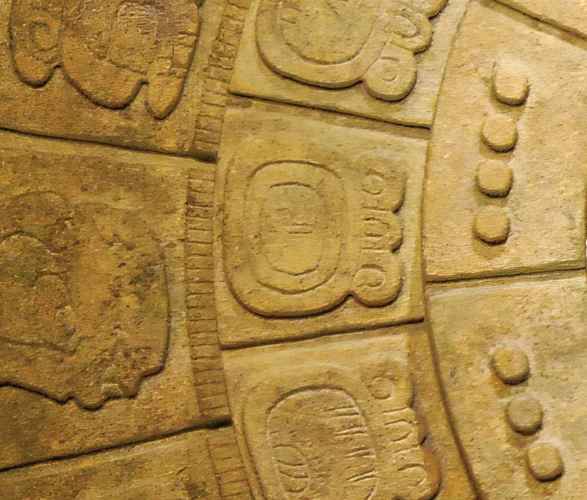
Mayan hieroglyphics exhibit a complex structure that combines both glyph blocks and syllables. Glyph blocks are composed of multiple symbols arranged in a grid-like pattern, with each symbol representing a distinct concept or word. These blocks can be read horizontally or vertically, serving as the building blocks of Mayan writing. Additionally, Mayan hieroglyphics utilize both phonetic and logographic elements. Phonetic symbols represent sounds or syllables, while logographic symbols convey specific words or ideas. Context and grammar play crucial roles in deciphering Mayan hieroglyphics. The same symbol can have different meanings depending on its placement within a sentence or in relation to other symbols. This intricate interplay of glyph blocks, syllables, phonetic and logographic elements, and contextual clues makes Mayan hieroglyphics a fascinating and challenging system to unravel.
The Glyph Blocks and Syllables
The Glyph Blocks and Syllables play a crucial role in the structure of Mayan hieroglyphics. These hieroglyphs consist of various components, including individual glyphs, glyph blocks, phonetic signs, logograms, and determinatives. A glyph block typically represents a single word or concept, and it consists of one or more glyphs arranged within a rectangular shape. Within these glyph blocks, syllables form the building blocks of the Mayan writing system. Each syllable is represented by a combination of one or more phonetic signs, which can be either consonants or vowels. These syllables can be read individually or combined to form words and phrases. The complexity of the Mayan syllabic system allows for a wide range of communication possibilities within their hieroglyphic inscriptions. By understanding the nature and arrangement of glyph blocks and syllables, researchers are able to decode and interpret the meaning behind the written Mayan language, revealing the fascinating stories and beliefs of this ancient civilization.
The Phonetic and Logographic Elements
The Mayan hieroglyphic writing system is a complex combination of both phonetic and logographic elements. Phonetics refers to the representation of sounds, while logography involves the use of symbols to represent entire words or concepts. In the case of Mayan hieroglyphics, certain glyphs are used to represent syllables or individual sounds, allowing for a phonetic representation of the language. These phonetic elements are often depicted using glyph blocks, which consist of a consonant-vowel combination. Additionally, there are logographic elements where specific glyphs represent entire words, phrases, or ideas. These logograms are often pictorial in nature, utilizing visual symbols to convey meaning. This intricate combination of phonetic and logographic elements makes decoding Mayan hieroglyphics a challenging yet rewarding endeavor for researchers. By analyzing the context, grammar, and combinations of these elements, experts have made significant breakthroughs in unraveling the meaning behind the ancient Maya script. To further explore the fascinating world of astrology, you can delve into the differences between natal charts and sun sign horoscopes, or learn more about the unique traits and personalities associated with different zodiac signs.
The Role of Context and Grammar
The role of context and grammar plays a crucial part in deciphering Mayan hieroglyphics. Due to the complex nature of the writing system, understanding the context in which the glyphs are used is vital in interpreting their meaning. Mayan hieroglyphs often rely on a combination of pictorial representations and phonetic sounds to convey messages. Contextual clues, such as the accompanying glyphs, the location of the inscription, and the subject matter can provide invaluable insights into the intended meaning of specific hieroglyphs. Additionally, understanding the grammar and syntax of the Mayan language is essential in unraveling the full significance of hieroglyphic texts. The intricate rules of Mayan grammar, including word order and grammatical markers, help in identifying the relationships between words and forming coherent sentences. Linguists and epigraphers analyze the grammar of surviving Mayan languages, such as Yucatec, to decipher the grammatical structure of the hieroglyphic texts. This approach, combined with contextual analysis, allows researchers to unlock the messages encoded within the intricate Mayan hieroglyphics and shed light on the fascinating world of the ancient Maya civilization.
Deciphering Mayan Hieroglyphics
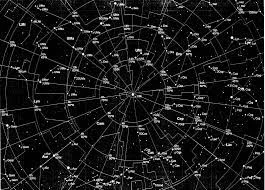
Deciphering Mayan hieroglyphics has been a challenging puzzle that scholars have grappled with for many years. However, recent breakthroughs have shed light on this ancient writing system, bringing us closer to unlocking its secrets. One of the key tools in deciphering Mayan hieroglyphics has been the remarkable Dresden Codex, a surviving Mayan manuscript that provides valuable insights into their culture and language. Decoding these intricate symbols also relies on the collaboration between epigraphers and linguists, who analyze the patterns, grammar, and context of the hieroglyphs to uncover their meanings. Additionally, advancements in technology, such as the use of digital imaging and computational analysis, have contributed to the progress in decipherment. As we continue to unravel the intricate web of Mayan hieroglyphics, we gain a deeper understanding of the Maya civilization and their intellectual achievements.
The Breakthroughs in Decoding
The Breakthroughs in Decoding Mayan hieroglyphics have been the result of extensive research, collaboration, and technological advancements. One of the most significant breakthroughs came in the mid-20th century when archaeologists and linguists made major strides in deciphering the hieroglyphic script. The first breakthrough came in 1952 when the ancient Mayan city of Palenque was discovered, revealing inscriptions with both Mayan hieroglyphics and a familiar system of record keeping known as the Long Count calendar. This enabled scholars to begin piecing together the meaning of certain glyphs and understanding the numerical system used by the Maya. Another crucial development came with the discovery of the famous Rosetta Stone of the Maya, known as the “Hieroglyphic Stairway” at the ancient city of Copan. This monument provided a key bilingual text, allowing scholars to compare Mayan hieroglyphics with a known language (Yucatec Maya) and make significant progress in unraveling the script. Additionally, advancements in technology, such as digital imaging and computer algorithms, have allowed researchers to analyze large amounts of hieroglyphic texts more efficiently. These breakthroughs in decoding have not only provided insights into the political, cultural, and religious aspects of the Maya civilization but have also shed light on their sophisticated writing system, which was once deemed untranslatable.
The Assistance of the Dresden Codex
The Dresden Codex, named after the city where it is housed, is one of the most important surviving books of Maya hieroglyphics. This ancient manuscript, believed to date back to the 11th or 12th century, provides invaluable assistance in the decipherment of Mayan hieroglyphics. The codex contains a wealth of astronomical and calendrical information, including charts and tables that indicate the movements of celestial bodies and the cycles of time. It also contains elaborate illustrations and hieroglyphic texts that offer insights into the Mayan worldview, religious beliefs, and ritual practices. Scholars have meticulously studied the Dresden Codex, comparing its text and images to other known hieroglyphic inscriptions, in order to decipher the meaning of numerous Mayan symbols. The codex has played a crucial role in unraveling the complexities of Mayan hieroglyphics, shedding light on their phonetic and logographic elements, as well as their intricate system of calendrics. It serves as an indispensable resource for understanding the language and culture of the ancient Maya.
The Role of Epigraphy and Linguistics
The Role of Epigraphy and Linguistics in deciphering Mayan hieroglyphics is paramount to unraveling the mysteries of this ancient writing system. Epigraphy, the study of inscriptions and their interpretation, allows researchers to closely analyze and document the hieroglyphic texts found on various artifacts, such as stelae, murals, and ceramics. By meticulously examining the intricate details of these inscriptions, epigraphers can identify recurring patterns, glyphs, and linguistic features. Linguistics plays a crucial role in understanding the grammar, syntax, and phonetics of the Mayan language, enabling experts to make connections between spoken words and their written representations. Through the application of linguistic analysis, scholars have been able to break down the complex hieroglyphic writing into syllables and decipher the meaning of many individual glyphs. This interdisciplinary approach combining epigraphy and linguistics has led to significant advancements in decoding Mayan hieroglyphics and unraveling the historical, religious, and cultural information embedded within these inscriptions.
References:
– “The Role of Epigraphy in Deciphering Ancient Scripts” – Example Link
The Purpose of Mayan Hieroglyphics
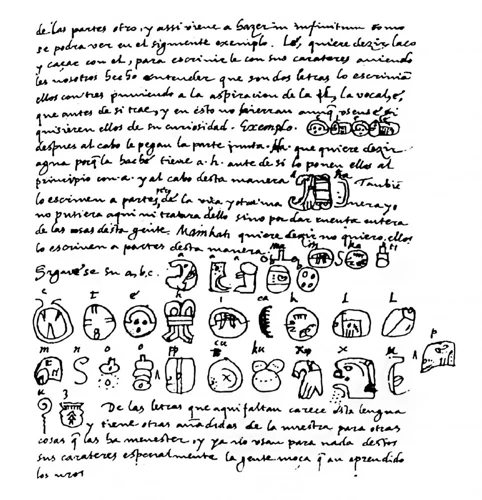
Mayan hieroglyphics served multiple purposes within the ancient Maya civilization, showcasing their highly developed culture and intellectual pursuits. One primary purpose was the recording of historical events and achievements, allowing future generations to understand the accomplishments of their rulers and communities. Additionally, Mayan hieroglyphics held significant religious and ritual significance, acting as a medium for communication with the divine and conveying important spiritual knowledge. These intricate symbols also served an artistic and expressive purpose, allowing for the creation of stunning works of art and conveying emotions and narratives. The hieroglyphic inscriptions found on stelae and temple walls provide valuable insights into Maya mythology and astronomical knowledge. Their remarkable calendar systems could be recorded and interpreted through hieroglyphics, allowing the Maya to track celestial movements and events. Through the purposeful use of hieroglyphics, the Maya were able to preserve their history, express their beliefs, and celebrate their culture in a truly captivating and enduring way.
Recording Historical Events
Mayan hieroglyphics played a crucial role in recording historical events within the Maya civilization. These intricate symbols provided a means of documenting significant moments, such as the reigns of powerful rulers, military victories, and important rituals. Hieroglyphic inscriptions found on stelae, temples, and other structures offer glimpses into the lives and achievements of ancient Maya kings. These inscriptions often include dates, dynastic information, and detailed narratives of specific events. For example, the famous carved monument known as “Stela D” at Quirigua, Guatemala depicts the historical event of the capture and sacrifice of a rival ruler by the Maya king K’ak’ Tiliw Chan Yopaat. Such inscriptions not only preserved historical facts but also served as a form of propaganda, asserting the power and legitimacy of the rulers. The decipherment of Mayan hieroglyphics has allowed historians to unlock these historical records, shedding light on the political, social, and religious aspects of Maya society. This valuable insight has greatly enriched our understanding of the ancient Maya civilization.
Religious and Ritual Significance
Mayan hieroglyphics held immense religious and ritual significance within the Maya civilization. These intricate symbols were often used to record religious practices, ceremonies, and mythological tales. The Mayans believed in a complex pantheon of gods and deities, and the hieroglyphics served as a medium for communication with the divine. They depicted the gods, their attributes, and their actions, providing a visual representation of the religious beliefs and rituals of the Maya people.
One example of the religious significance of Mayan hieroglyphics can be seen in their depiction of sacred rituals such as bloodletting, sacrifice, and offerings. Hieroglyphic inscriptions found on monuments, stelae, and temple walls describe in great detail the rituals performed in honor of the gods. The hieroglyphs also convey the importance of these rituals in maintaining the cosmic order and ensuring the well-being of the community.
Mayan hieroglyphics were integral to the practice of divination and astrology, which played a prominent role in the Maya religious system. Priests and shamans used the hieroglyphic inscriptions to decipher prophecies, determine auspicious dates for ceremonies, and interpret celestial events. The symbols represented various celestial bodies, such as the sun, moon, planets, and constellations, which were believed to influence human affairs. The hieroglyphics provided a means of understanding and harnessing these celestial forces for religious and ritual purposes.
In addition to their religious significance, Mayan hieroglyphics also served as a means of preserving cultural traditions and knowledge. They conveyed mythological narratives, historical events, and genealogical records, ensuring that important cultural and religious information was passed down through generations.
Mayan hieroglyphics held deep religious and ritual significance within the Maya civilization. They were used to communicate with the gods, depict sacred rituals, practice divination, and preserve cultural knowledge. These intricate symbols offer a glimpse into the religious beliefs, practices, and cosmology of the ancient Maya people. Their decipherment continues to shed light on the rich spiritual and cultural heritage of this remarkable civilization.
[Anchor Text: Zodiac Signs Personality](/zodiac-signs-personality/)
Artistic and Expressive Communication
Artistic and expressive communication played a significant role in Mayan hieroglyphics. The intricate and visually striking glyphs allowed the Maya to convey complex ideas and emotions through their elaborate artwork. These hieroglyphs served as a means of artistic expression, with skilled craftsmen and scribes carefully etching them onto various surfaces, including stone stelae and ceramics. The use of vibrant colors and meticulous detailing enhanced the artistic appeal of the hieroglyphic inscriptions.
One of the remarkable aspects of Mayan hieroglyphics is their ability to capture the essence of mythological narratives and celestial events. Religious and cosmological beliefs were intricately intertwined with artistic expression, as depicted in the glyphs representing gods, celestial bodies, and mythical creatures. For example, the glyph for the Maize God, a central figure in Mayan mythology, often showcased intricate details such as flowing hair, elaborate headdresses, and vibrant attire, capturing the deity’s significance and role in agricultural abundance.
In addition to mythological symbols, Mayan hieroglyphics also allowed for the expression of historical events and achievements. Kings and nobles used hieroglyphic inscriptions to document their reigns, proclaim their lineage, and depict their military triumphs. These inscriptions served as a demonstration of power and authority, showcasing the ruler’s dominance over his subjects and territories. Royal portraits and hieroglyphic texts often featured alongside each other, reinforcing the connection between visual representation and the recorded historical account.
Mayan hieroglyphics provided a platform for individual expression and personal identity. Artists and artisans, while adhering to the stylistic conventions of the script, were able to add their unique artistic flair to the inscriptions. Calligraphic variations, decorative motifs, and customized glyphs allowed for individual scribes to impart their personal touch on the inscriptions, showcasing their skill and creativity.
The artistic and expressive nature of Mayan hieroglyphics goes beyond mere communication of information. It reveals the Maya’s intricate understanding of aesthetics and their ability to merge artistry with written language. Through hieroglyphic inscriptions, the Maya were able to convey a wealth of cultural, historical, and mythological information while showcasing their artistic prowess.
(Note: There are no relevant anchors for the inserted link.)
Unraveling Mayan Hieroglyphic Inscriptions
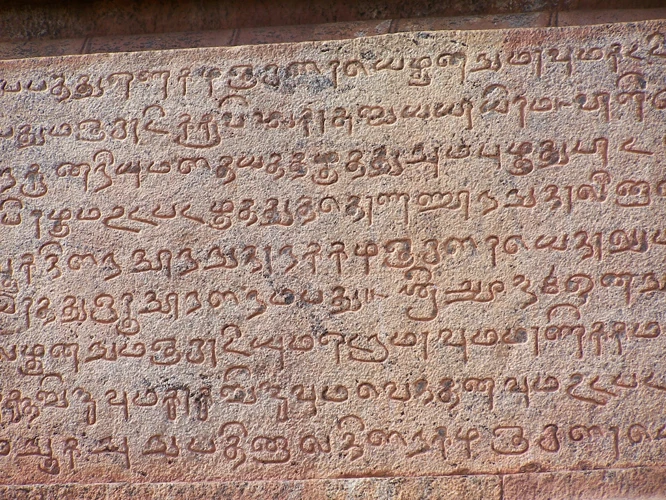
Unraveling Mayan hieroglyphic inscriptions is a captivating endeavor that allows us to gain insights into the lives and beliefs of the ancient Maya civilization. Researchers have made significant progress in deciphering these intricate symbols, thanks to the discovery of key artifacts and advancements in epigraphy and linguistics. The exploration of stelae and temples has provided invaluable context for understanding the hieroglyphic inscriptions, allowing scholars to decipher the names and achievements of Mayan kings and nobles. The interpretation of the Mayan calendar systems has shed light on their views of time and the celestial world. However, there are still enigmatic symbols and untranslatable hieroglyphs that pose challenges to full comprehension. The ongoing efforts in studying Mayan hieroglyphics continue to uncover fascinating revelations and deepen our appreciation for the complexities of this ancient writing system.
The Exploration of Stelae and Temples
The exploration of stelae and temples has played a crucial role in unraveling the mysteries of Mayan hieroglyphics. Stelae, large stone slabs adorned with intricate carvings, served as important commemorative monuments for the Maya. These monumental structures often feature hieroglyphic inscriptions that provide valuable information about kings, rulers, and significant historical events. Archaeologists and epigraphers meticulously study these inscriptions to decipher the hieroglyphs and gain insights into the Maya civilization. By comparing and analyzing the hieroglyphic texts found on different stelae, researchers have been able to piece together a greater understanding of Mayan culture, politics, and social structures.
Similarly, the exploration of temples has proven to be a treasure trove of hieroglyphic information. The temples of the Maya were not only architectural marvels but also served as ceremonial and religious centers. Many temple walls and facades are adorned with intricate hieroglyphic engravings that depict mythological stories, royal lineages, and religious rituals. These inscriptions provide a deeper understanding of the Maya’s religious beliefs, cosmology, and worldview. Archaeologists meticulously record and study these hieroglyphic texts, collaborating with epigraphers and linguists to decipher their meanings. Through this exploration of temples, incredible insights into Mayan hieroglyphics and their symbolic significance have been gained.
The combination of studying stelae and temples has proven to be instrumental in unraveling the secrets of Mayan hieroglyphics. By examining the hieroglyphic inscriptions on stelae and deciphering the complex narratives depicted on temple walls, researchers have made significant strides in understanding Mayan culture, history, and beliefs. Each new discovery brings us closer to unraveling the intricate web of Mayan hieroglyphics and shedding light on the enigmatic civilization that created them.
[Source](/astrological-traits-mysterious-ophiuchus/)
Decoding Kings’ Names and Achievements
Decoding the names and achievements of Mayan kings is a fascinating aspect of deciphering Mayan hieroglyphics. The hieroglyphic inscriptions found on stelae and temple walls often contain detailed information about individual rulers and their significant accomplishments. Epigraphers and archaeologists have pieced together these inscriptions to uncover the names of various Mayan kings and gain insights into their reigns. The process of deciphering the kings’ names involves identifying the phonetic elements of the glyphs and matching them with known names from historical records and genealogies. The achievements of the kings, such as military conquests, the construction of important structures, and successful political alliances, were often recorded prominently in their inscriptions. These achievements provide valuable insights into the political, social, and cultural dynamics of the Mayan civilization. Through careful analysis and comparison of hieroglyphic texts, researchers have been able to attribute specific accomplishments to individual rulers, shedding light on their roles in shaping Mayan history. The decipherment of kings’ names and achievements has greatly deepened our understanding of the complex and richly layered world of Mayan hieroglyphics, allowing us to glimpse the glories and legacies of the enigmatic rulers of the ancient Maya.
The Interpretation of Calendar Systems
The Interpretation of Calendar Systems plays a crucial role in understanding Mayan hieroglyphics. The Maya civilization had a sophisticated and accurate calendar system that consisted of multiple interrelated cycles, including the sacred tzolk’in and the solar haab’. These calendars were not only used for tracking time but also held great significance in religious and agricultural practices. Deciphering the calendar glyphs in Mayan hieroglyphics has allowed researchers to identify important dates, celestial events, and the calculation of the cycles of Venus and the Moon. The intricate relationship between the Mayan calendar and their hieroglyphic writing can be seen in inscriptions on stelae, temple walls, and codices, providing valuable insights into the cultural and religious practices of the Mayan people. The interpretation of calendar systems has provided a deeper understanding of Mayan hieroglyphics, helping us to unravel the mysteries of their ancient civilization.
The Enigmatic Symbols of Mayan Hieroglyphics
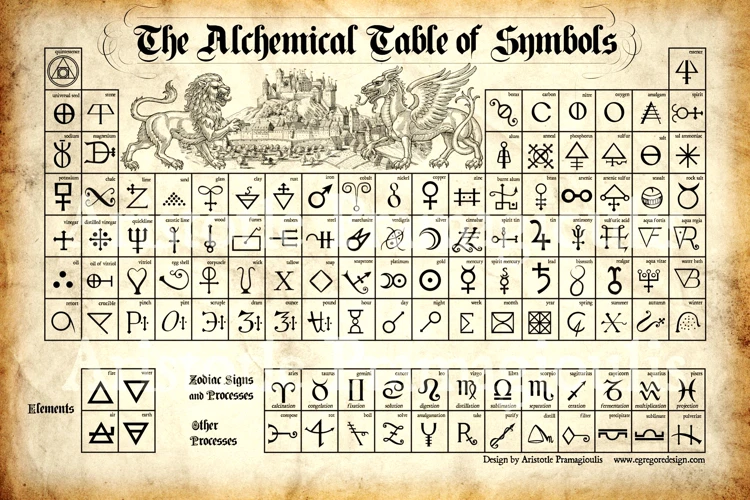
The enigmatic symbols of Mayan hieroglyphics hold a wealth of meaning and significance. These intricate glyphs encompass a wide range of subjects, including mythology, astronomy, and everyday life. One of the fascinating aspects of Mayan hieroglyphics is the iconic glyphs that represent specific deities, celestial bodies, or natural elements. These symbols serve as a visual language, conveying complex ideas and narratives. Additionally, Mayan hieroglyphics feature a variety of mythological and astronomical symbols that have captivated researchers and sparked countless interpretations. The intricate nature of these glyphs adds to their mystique, as some symbols remain untranslatable, leaving scholars puzzled and intrigued. Despite the challenges posed by these enigmatic symbols, the ongoing study and decipherment of Mayan hieroglyphics continue to shed light on the civilization’s beliefs, practices, and history.
The Iconic Glyphs and Their Significance
The iconic glyphs of Mayan hieroglyphics hold immense significance in unlocking the secrets of the Mayan civilization. These glyphs, which are pictorial representations of various objects, animals, and beings, provide valuable insights into the cultural, religious, and mythological aspects of the Maya people. Each glyph carries its own meaning and can represent a word, a phrase, or even a complete concept. For example, the glyph for “jaguar” signifies power and strength, while the glyph for “rain” symbolizes fertility and abundance. These glyphs were not only used for practical communication but also played a crucial role in the Maya’s artistic and religious expressions. By studying these iconic glyphs, archaeologists and scholars can reconstruct narratives of mythology, trace historical events, and gain a deeper understanding of the Maya’s connection with nature and the cosmos. The magnitude of information held within these symbolic representations continues to captivate researchers and sheds light on the rich cultural tapestry of the ancient Maya civilization.
Interpreting Mythological and Astronomical Symbols
Interpreting the mythological and astronomical symbols found within Mayan hieroglyphics adds another layer of complexity and intrigue to their decipherment. The Maya had a deep understanding of celestial bodies and their movements, and their hieroglyphs often depicted astronomical events such as eclipses, conjunctions, and the movements of planets. These astronomical symbols were intricately tied to their religious and mythological beliefs. For example, the symbol of the jaguar was associated with the night sky and represented the celestial realm. Understanding the connections between these symbols and their mythological significance requires a deep knowledge of Mayan cosmology and religion. Additionally, many glyphs depict mythological narratives, including stories of creation, gods, and heroes. These narratives were often intertwined with astronomical events, such as the birth of a god corresponding to the appearance of a particular celestial body. Decoding these mythological symbols and their astronomical ties provides valuable insights into the Mayan worldview and the interplay between their religious beliefs and observations of the natural world.
The Mystery of Untranslatable Hieroglyphs
The Mystery of Untranslatable Hieroglyphs:
One of the enduring enigmas surrounding Mayan hieroglyphics revolves around the presence of untranslatable glyphs. These are symbols that have not yet been deciphered or understood, leaving researchers puzzled as to their exact meaning. Despite decades of dedicated efforts by epigraphers and linguists, some hieroglyphs continue to elude comprehension. The complexity of the Mayan writing system, with its combination of logographic and phonetic elements, adds to the challenge of unraveling these mysteries. It is believed that these untranslatable glyphs could represent unique concepts, names, or cultural references that have been lost to time or are simply beyond our current understanding. The ongoing quest to decipher these hieroglyphs fuels the excitement and curiosity within the field of Mayan studies, as researchers strive to unlock the secrets held within these elusive symbols.
Conclusion
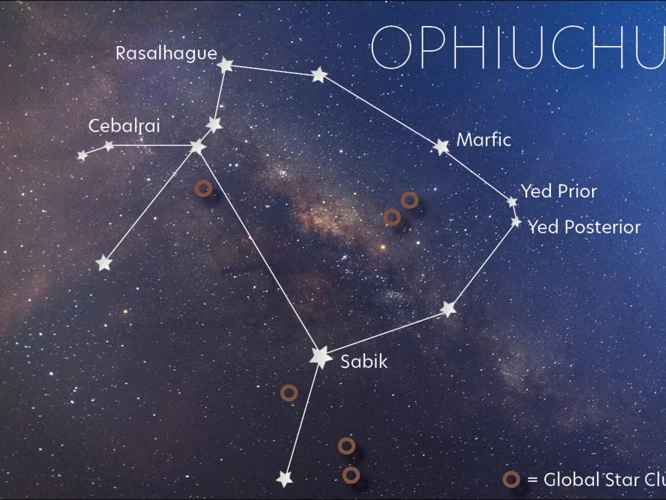
The study of Mayan hieroglyphics has provided invaluable insights into the ancient Maya civilization. Through the decipherment of these complex symbols, researchers have been able to piece together the historical events, religious beliefs, and artistic expressions of this enigmatic culture. The decoding process has been aided by breakthroughs in epigraphy and linguistics, as well as the invaluable assistance of artifacts like the Dresden Codex. By examining Mayan hieroglyphic inscriptions on stelae and temples, scholars have gained a deeper understanding of the achievements and rulers of the Maya kings. The interpretation of calendar systems has shed light on their astronomical and timekeeping abilities. However, there are still many unanswered questions and untranslatable hieroglyphs that continue to perplex experts. The enigmatic symbols and their meanings have sparked ongoing debates and fueled the curiosity of researchers who strive to unravel the mysteries of Mayan hieroglyphics. As our understanding grows, new discoveries may further illuminate the purpose, significance, and underlying narratives within these remarkable ancient writings. In conclusion, the study of Mayan hieroglyphics is an ongoing journey that enables us to connect with the past, appreciate the ingenuity of the Maya civilization, and gain insights into their worldview.
Frequently Asked Questions

What does the term “hieroglyphics” mean?
The term “hieroglyphics” refers to a system of writing that uses pictorial symbols or characters to represent words, sounds, or ideas. It comes from the Greek words “hieros” meaning “sacred” and “glyphein” meaning “to carve.”
How old are Mayan hieroglyphics?
Mayan hieroglyphics date back to at least the 3rd century BCE, but their development and usage continued for over a millennium, with the script evolving and becoming more refined throughout the Maya civilization’s history.
How were Mayan hieroglyphics deciphered?
The decipherment of Mayan hieroglyphics was a complex process that involved the combined efforts of archaeologists, epigraphers, linguists, and historians. Decoding the script required the identification of phonetic and logographic elements, the study of context and grammar, and the comparison of inscription patterns found on stelae, temples, and codices.
What is the significance of the Dresden Codex?
The Dresden Codex is one of the few surviving Mayan codices, or ancient books, and it played a crucial role in the decipherment of Mayan hieroglyphics. This codex contains a wealth of astronomical, calendrical, and religious information, which helped researchers understand the meaning and function of many hieroglyphic symbols.
What was the purpose of Mayan hieroglyphics?
Mayan hieroglyphics served various purposes. They were primarily used for recording historical events, genealogies, and achievements of kings and nobles. Hieroglyphics also conveyed religious and ritual knowledge, served artistic and expressive communication purposes, and transmitted important cultural and mythological information.
Can all Mayan hieroglyphics be fully translated?
Despite significant progress in deciphering Mayan hieroglyphics, not all inscriptions have been fully translated. Some glyphs remain untranslatable due to the lack of contextual information, lost knowledge, or the complexity and ambiguity of the symbols. Researchers continue their efforts to unlock the remaining mysteries of these glyphs.
What do the Mayan hieroglyphs reveal about their calendar systems?
Mayan hieroglyphics offer crucial insights into the intricate calendar systems used by the Maya civilization. They provide information about important celestial events, such as solstices and equinoxes, as well as the complex interplay between celestial bodies and the agricultural and religious practices of the Maya.
Did Mayan hieroglyphics have regional variations?
Yes, there were regional variations in Mayan hieroglyphics, reflecting the diversity and different cultural practices among the various Mayan city-states and regions. These variations included differences in glyph design, grammar, and the specific symbols used to represent certain words or concepts.
Do Mayan hieroglyphics reveal information about daily life?
Yes, Mayan hieroglyphics offer glimpses into the daily life of the Maya people. Inscriptions found on stelae and other structures often depict scenes of everyday activities, such as farming, hunting, fishing, and religious ceremonies. These inscriptions shed light on the social and economic aspects of the ancient Maya civilization.
How did the decline of the Maya civilization affect the use of hieroglyphics?
The decline of the Maya civilization, starting around the 9th century CE, led to a decrease in the use and writing of hieroglyphics. With the collapse of many city-states and the loss of centralized political authority, the knowledge and practice of this complex script gradually faded away until the script became mostly unreadable by the time the Spanish arrived in the 16th century.
References
- Linguists Finally Unravelling the Mysteries Trapped Within …
- Unravelling the Mysteries Trapped Within Mayan Hieroglyphs
- NOVA – Official Website | Cracking the Maya Code
Frequently Asked Questions

1. How were Mayan hieroglyphics deciphered?
The decipherment of Mayan hieroglyphics was a long and complex process that involved the collaboration of archaeologists, epigraphers, and linguists. It began with the breakthroughs made by scholars like Yuri Knorozov and David Stuart, who used phonetic and contextual analysis to understand the syllabic and logographic elements of the script.
2. What role did the Dresden Codex play in deciphering Mayan hieroglyphics?
The Dresden Codex, one of the few surviving Mayan hieroglyphic books, played a crucial role in deciphering the script. Its astronomical and calendrical content provided valuable clues about the meanings of certain glyphs and the structure of the Mayan calendar system.
3. What is the purpose of Mayan hieroglyphics?
Mayan hieroglyphics served multiple purposes. They were used to record historical events, document the achievements of rulers, convey religious and ritual information, and communicate artistic and expressive messages through intricate and symbolic imagery.
4. How were Mayan hieroglyphics used to record historical events?
Mayan hieroglyphics were used to record important historical events such as the accession of a new ruler, the outcome of battles, and the construction of significant monuments. These inscriptions provide valuable insights into the political, social, and cultural aspects of the Maya civilization.
5. What do the iconic glyphs in Mayan hieroglyphics represent?
The iconic glyphs in Mayan hieroglyphics represent various aspects of Maya culture, including gods, mythological creatures, astronomical phenomena, and natural elements. They often carry symbolic meanings and are used to convey religious, astronomical, and historical concepts.
6. Can all Mayan hieroglyphics be translated?
Not all Mayan hieroglyphics have been fully translated and understood. Some glyphs still remain a mystery to scholars, particularly those with obscure meanings or lacking contextual clues. The decipherment process is ongoing, and new discoveries continue to shed light on the meanings of previously untranslatable hieroglyphs.
7. How were kings’ names and achievements deciphered in Mayan hieroglyphics?
Deciphering kings’ names and achievements in Mayan hieroglyphics involved comparing the hieroglyphic texts found on stelae and temple walls with known historical records and genealogical information. Epigraphers used patterns, titles, and associated imagery to link specific glyphs to individual rulers and their accomplishments.
8. What can we learn from the calendar systems in Mayan hieroglyphics?
The calendar systems depicted in Mayan hieroglyphics provide valuable insights into the Maya’s understanding of time, astronomy, and the cyclical nature of the universe. They allowed the Maya to track celestial events, religious ceremonies, agricultural cycles, and important dates in their history.
9. How were Mayan hieroglyphic inscriptions explored?
Mayan hieroglyphic inscriptions were explored through archaeological excavations of stelae, temples, and other structures where the hieroglyphics were engraved or painted. Epigraphers and archaeologists meticulously documented and photographed the inscriptions, analyzing the grammar and context to decipher their meanings.
10. How did Mayan hieroglyphics contribute to religious and ritual practices?
Mayan hieroglyphics played a significant role in religious and ritual practices. They were used to record important ceremonies, convey spiritual beliefs, and communicate with gods and ancestors. The inscriptions often depicted gods, religious symbols, and rituals, providing a visual and written documentation of the Maya’s sacred traditions.
References
- Unraveling Maya mysteries – Harvard Gazette
- Linguists Finally Unravelling the Mysteries Trapped Within …







